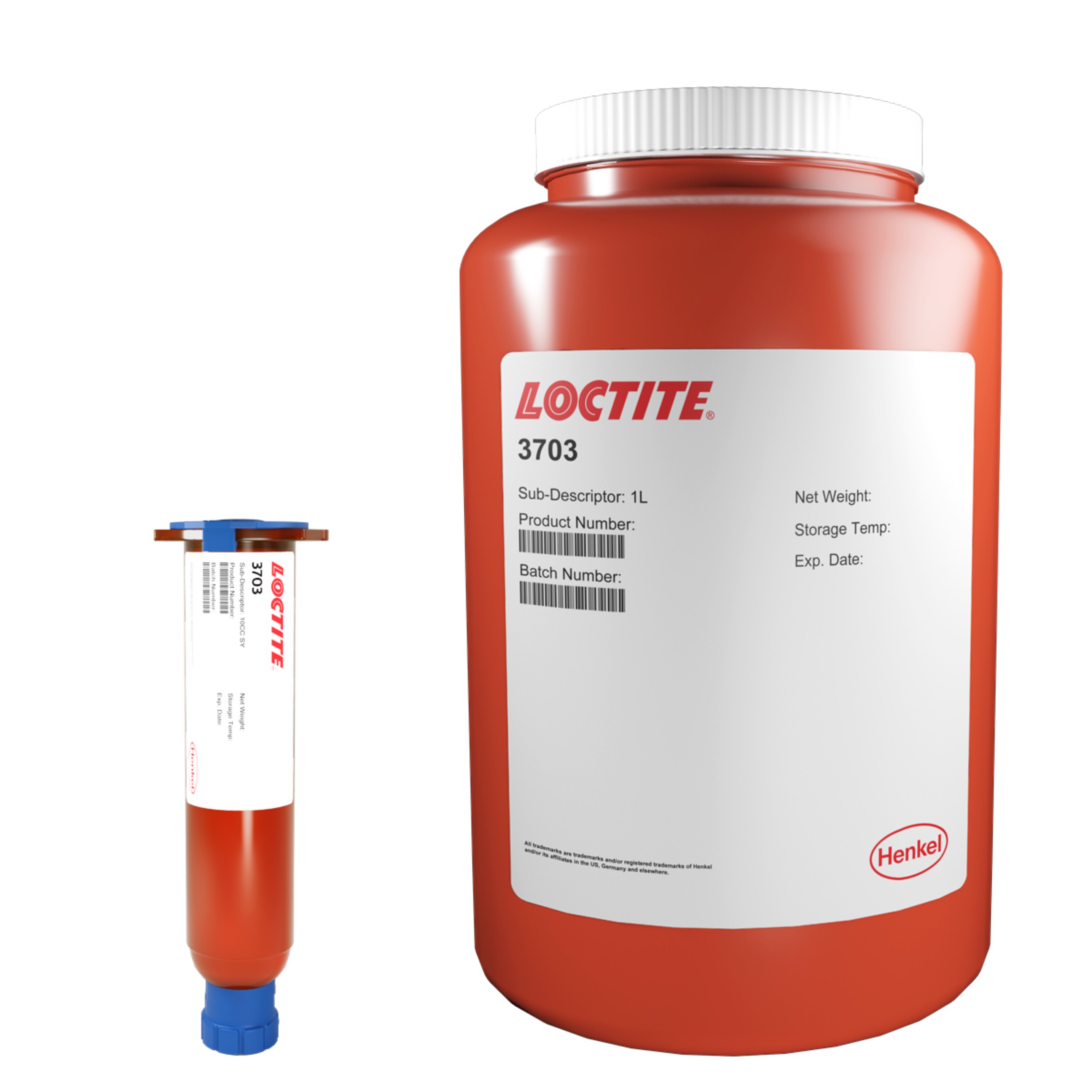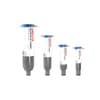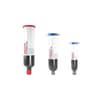LOCTITE 3703
- UV & Visible light Cure
- High speed curing
- Replaced by DSP 190024
Product Description
LOCTITE® 3703 is an acrylic adhesive paste, primarily designed for bonding rigid and flexible PVC to polycarbonate where large gap filling capabilities (0.25mm) and a flexible joint are desired. Its flexibility enhances the load bearing and shock absorbing characteristics of the bond area. The product has shown excellent adhesion to a wide variety of substrates including glass, many plastics and most metals. The thixotropic nature of LOCTITE® 3703 reduces the migration of liquid product after application to the substrate and is ideal for optical applications.
LOCTITE® 3703 is an acrylated urethane white/translucent paste that can be cured by exposure to UV and/or visible light of sufficient intensity. Surface cure is enhanced by exposure to UV light in the 220 to 260 nm range. Cure rate and ultimate depth of cure depend on light intensity, spectral distribution of the light source, exposure time and light transmittance of the substrate through which the light must pass.
This product has been removed from our product list, but fret not. LOCTITE DSP 190024 is an almost identical UV cure display sealant product in larger package sizes, suitable for the display market.
Technical Specifications
| General Properties | |||||
| Specific Gravity Specific Gravity Specific gravity (SG) is the ratio of the density of a substance to the density of a reference substance; equivalently, it is the ratio of the mass of a substance to the mass of a reference substance for the same given volume. For liquids, the reference substance is almost always water (1), while for gases, it is air (1.18) at room temperature. Specific gravity is unitless. | 1.12 | ||||
| Mechanical Properties | |||||
| Elongation Elongation Elongation is the process of lengthening something. It is a percentage that measures the initial, unstressed, length compared to the length of the material right before it breaks. It is commonly referred to as Ultimate Elongation or Tensile Elongation at break. | 85 % | ||||
| |||||
| |||||
| Physical Properties | |||||
| Viscosity Viscosity Viscosity is a measurement of a fluid’s resistance to flow. Viscosity is commonly measured in centiPoise (cP). One cP is defined as the viscosity of water and all other viscosities are derived from this base. MPa is another common unit with a 1:1 conversion to cP. A product like honey would have a much higher viscosity -around 10,000 cPs- compared to water. As a result, honey would flow much slower out of a tipped glass than water would. The viscosity of a material can be decreased with an increase in temperature in order to better suit an application | 20,000 mPa.s | ||||
Additional Information
LOCTITE® 3703™ can be cured by exposure to UV and/or visible light of sufficient intensity. Surface cure is enhanced by exposure to UV light in the 220 to 260 nm range. Cure rate and ultimate depth of cure depend on light intensity, spectral distribution of the light source, exposure time and light transmittance of the substrate through which the light must pass. Fixture Time UV fixture time is defined as the light exposure time required to develop a shear strength of 0.1 N/mm².
UV Fixture Time, Glass microscope slides, seconds:
- 6 mW/cm², measured @ 365 nm ≤10LMS






